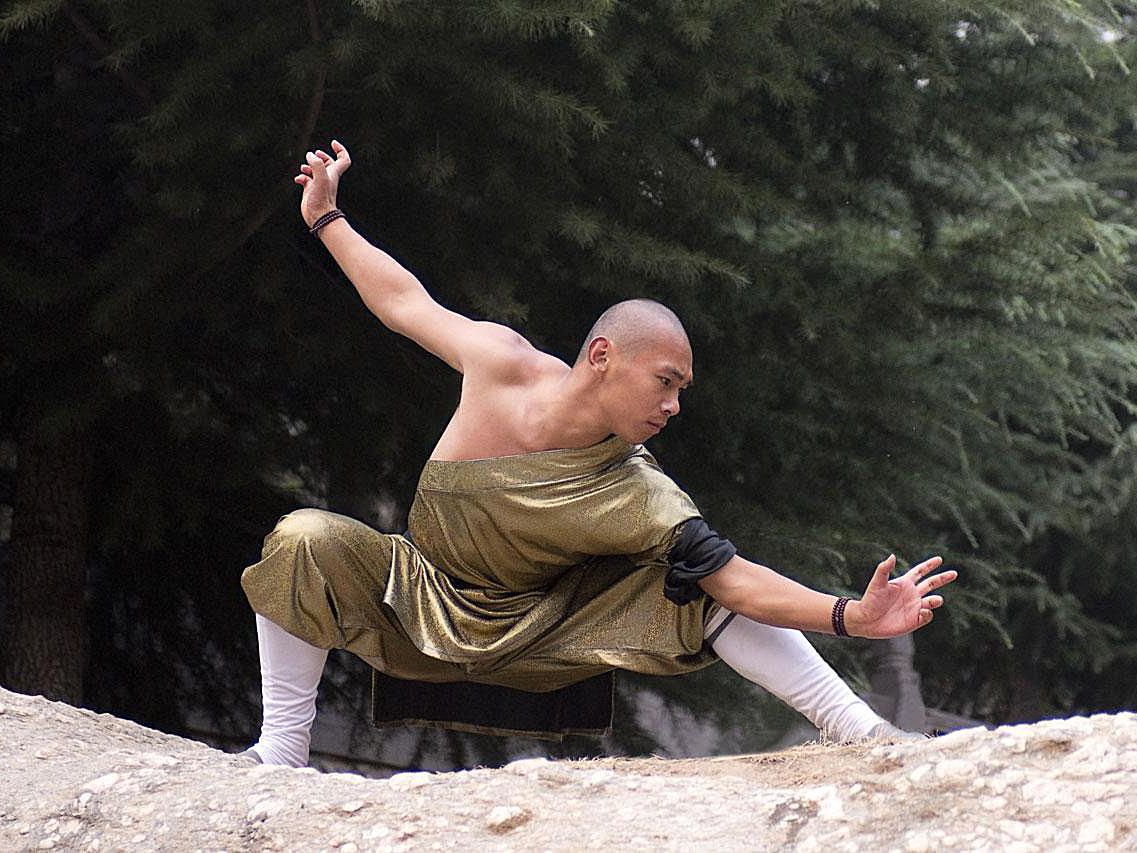Kung Fu Styles

By “style” we mean a particular school, with its own training methods, favored techniques, and emphasis on attack and defense. In choosing a style try to find one that is your physical attributes, interests, and sense of utility.
Kung Fu styles may generally be divided into three classes: Shaolin Temple styles, temple-derived non-temple styles, and family styles.
There are two major divisions in Shaolin Kung Fu: northern and southern. The southern temples are hand technique-oriented, while northern temples put more emphasis on kicks and foot techniques.
The northern Shaolin styles primarily consist of Northern Mantis, Black Crane, and Black Tiger.
The southern Shaolin styles primarily consist of White Crane, Tiger, Dragon, Leopard, Snake, and Southern Praying Mantis.
There were also styles that had their roots in the Shaolin temples, such as Wig Chun and Hung Gar.
There are over 500 styles in Kung Fu. We will try to present you some of them:
• Shaolin Kung Fu (Shaolin boxing 550-577 B.D.). This style is the first style of Shaolin Temple. Its founder is Bodhidharma.
• Chang Chuan (1368-1644). This style includes such styles as Cha Chuan, Hua Chuan, Pao Chuan, Flower boxing, Hong Chuan…
• Tai Chi Chuan (502-557 B.D.). This style includes Chen, Yang, Wu …
• Xing Yi Chuan (1602-1683). This style is founded by Mee Layk.
• Bagua Zhang (1830-1900). It is found-ed by Lee Zuingling.
• Nan Chuan (Southern fist 1368-1644). This style includes 5 styles: Hung Family, Sasi Family, Leo Family, Lee Family, and Mu Family.
The Mantis has its watchwords silence and determination. Although it is a physical system in terms of its origin, it is classified as a high system. The mantis warrants its prominence because of its extreme efficiency. Despite the fact that it is hand-oriented and lacks the fancy leg maneuvers of a dragon, it is versatile and overpowering. The characteristic of mantis, as well as dragon and snake, is the virtual lack of blocks. Since blocks are inefficient, the high systems follow the advice of the ancient sages and yield in order to conquer. Also, it combines ch’i and extreme awareness to be virtually invincible.
The Snake Style is characterized by its flowing and continuous movements by the stabbing hand motions to the face, throat, and genitals.
The cobra system is a stance that resembles a cobra arisen from the grass with a spread hood. Cobra is designed for speed and tenacity. Most of its techniques are hand maneuvers aimed at the eyes and throat.
The Crane Style is one of the traditional Shaolin systems. A legend is also attached to its birth. One day a monk stumbled on a battle between an ape and a crane. It seemed as if the ape would rend the bird in two. However, the bird continually stymied the ape flapping its wings and darting in and out with its beak; at last, the ape was driven away. The graceful movements of the bird have been copied as well as its one-leg stance. The principal weapons of the system are its long-range kicks and a hand formation, the crane’s beak. The crane movements are used to develop control character and spirit.
Tiger is another natural system. It is the opposite of Crane. It is a vicious method of fighting utilizing powerful kicks and grim clawing motions. Like the tiger, its practitioner fights fiercely, rending, tearing, and breaking any open space of skin or limb that is left unguarded. It is highly defensive in nature, waiting until being backed into a corner, then unleashing an unstoppable assault. Its principal hand weapon is the tiger claw, also useful for unarmed defense against weapons.
By clasping the weapon between the hands or enmeshing it in the crushing grip of the hand, the enemy’s advantage is lost.
The tiger movements were formed to develop the bones, tendons, and muscles. Movements are short, snappy, and forceful.
The basis of the Dragon systems is ch’i, the inner power. The movements and applications of the dragon systems are dependent on the use of ch’i. The special flow that distinguishes it from the flow of the crane system is due to ch’i. Also, the ch’i is substituted for muscular strength. For example, a tiger stylist would break rock by sheer force and physical technique, while a dragon stylist would shatter it by ch’i projection. It is a series of high-speed hand and arm techniques using punches, grabs, palm strikes, arm blocks, and elbow strikes. It has been described as playing chess at warp speed.
Eagle involves attacks against areas of the neck, soft tissues under the arm, muscular areas of the body.
The Eagle Claw itself is developed through dynamic tension exercises. For example, squeezing a wad of clay within the three fingers of the Eagle Claw. Another method of training involves using a chain-link fence to strike and grab the fence with accuracy and power.
The eagle techniques include bent wing, and long arm eagle techniques.
Drunken Style is a generic term. Today there are many forms of Drunken Kung Fu, such as Drunken Monkey of Monkey form and Eight Immortals. The main concept behind Drunken Kung Fu is to move as if one were drunk and the sudden release of coiled power from awkward positions.







